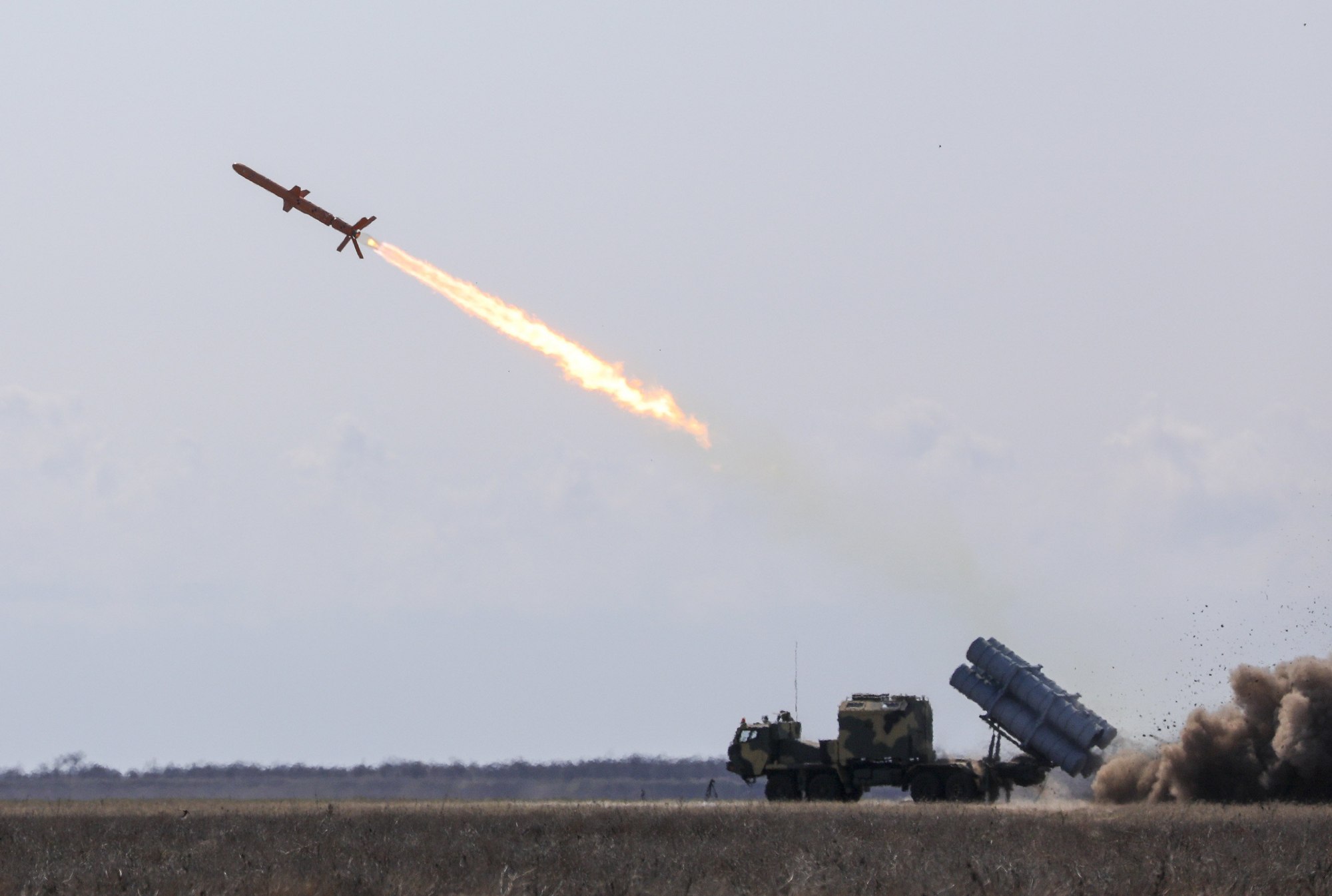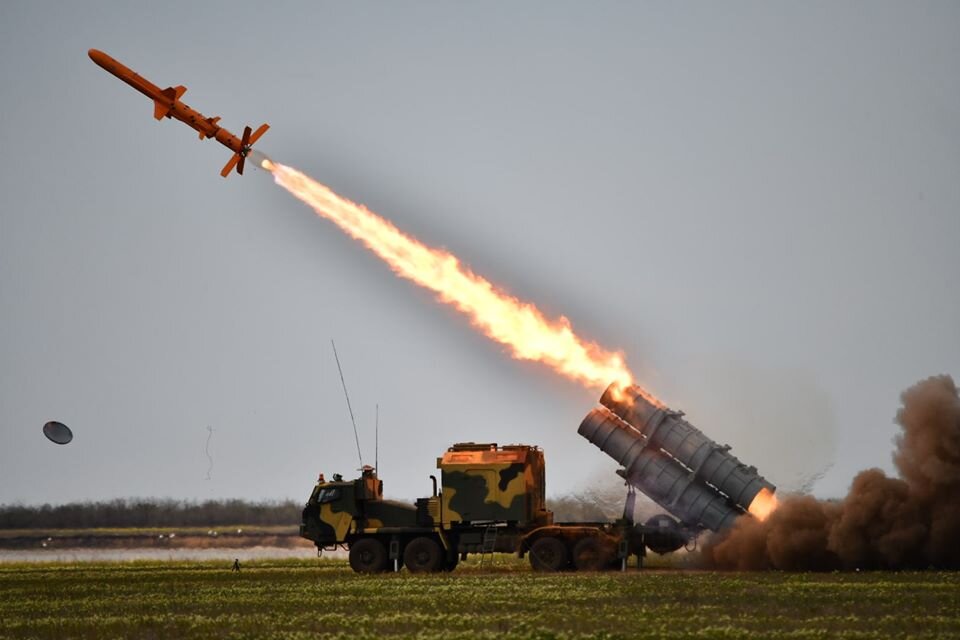In a bid to organize a coastal defense against Russia, Ukraine’s military will put three divisions of RK-360MC Neptune cruise missile systems into service by 2025, according to the country’s top naval commander, Rear Admiral Oleksiy Neizhpapa.
“We plan on deploying these divisions in Ukraine’s southern oblasts that are bounded by the Black and Azov seas coastline,” the navy leader said. “Moreover, immediately following their deployment, we plan on putting one of the Neptune batteries on permanent standby duty.”
Neizhpapa’s announcement marks the latest event in the saga of the Neptune missile system’s rapid development and implementation in Ukraine as the country contends with aggressive Russian maritime forces.
On Aug. 24, the Ukrainian-produced missile systems were finally accepted for service after a series of live-fire field tests on the Black Sea coast.
The project to develop the weapon was launched in 2014 as a reaction to Russia’s annexation of Crimea, where Ukraine lost nearly 80% of its navy vessels, effectively rendering the country’s maritime domain defenseless to the Russian navy.
Led by chief engineer Oleh Korosteliov of the Kyiv-based design bureau Luch, the development gained additional urgency as Russia monopolized the Azov Sea and aggressively impeded Ukrainian commercial and military navigation in 2017-2019. On Nov. 25, 2018, Russian warships directly attacked and seized Ukrainian navy vessels trying to enter the Azov Sea through the Kerch Strait, taking 24 Ukrainian sailors prisoner.
They were only freed in September 2019.

The Neptune coastal defense system launches a cruise missile during live-fire tests at a firing range in Odesa Oblast on Apr. 5, 2019. (Mikhail Palinchak)
In early 2018, the Neptune missile system successfully passed its first field test.
According to designers, the RK-360MC Neptune is a coastal defense cruise missile system reportedly able to kill vessels weighing up to 5,000 tons of water displacement. It was designed based on the old Soviet anti-ship missile Kh-35, with greatly improved engines and targeting systems.
With a maximum operational range of 300 kilometers, these systems are expected to cover much of Ukraine’s southern aquatic areas and will be capable of destroying hostile amphibious vessels trying to land troops on the country’s shores.
Apart from the coastal defense option, the Luch bureau also intends to develop the missile’s shipboard and air-to-surface versions in the coming years.
Despite being designed rapidly and amid a severe lack of resources, the Neptunes received overwhelmingly favorable feedback from military and civilian defense experts.
“Back in the day, when I was serving as a deputy commander of the navy, I also chaired the acceptance board and was personally in command of the Neptune launches,” Neizhpapa said on Sept. 2.
“This missile system is simply a breakthrough for Ukraine’s missile building industry.
“Very few nations possess the technologies to produce their own cruise missiles… (The Neptunes) successfully destroy several targets simultaneously, given that the distances (between the missile system and the surface targets), as well as the distances between these targets, are very different.”

The Neptune coastal defense system launches a cruise missile during live-fire tests at a firing range in Odesa Oblast on April 27, 2020. (Ministry of Defence of Ukraine)
According to the military, the missile can gain a velocity of up to 1,000 kilometers per hour and purposefully deviate its course in order to avoid being spotted and intercepted.
One Neptune division is expected to operate up to 72 missiles, thus raising the number of the navy’s missiles to over 200.
“Even one Neptune division can be a safeguard against a Russian attack (in Ukraine’s littoral zone),” Valentyn Badrak of the Kyiv-based defense think tank Center for Army, Conversion and Disarmament Studies said on Aug. 27.
Even though deploying Neptunes would not be enough for full-fledged deterrence, “they can give a boost to new hi-tech programs, such as the procurement of missile boats and strike drones, creating a united automatized command system, designing a domestically-produced air defense system, or deploying robotized missile strike units or other military hardware.”
On Aug. 24, immediately after the Neptune system was officially accepted for service, Ukrainian President Volodymyr Zelensky awarded chief designer Oleh Korosteliov the title Hero of Ukraine.
In a recent interview, the famed engineer noted that the first missile division could be produced for the military by the end of 2021 or earlier, adding that upcoming Neptune modifications could increase its operational range from 300 to 500 kilometers.
